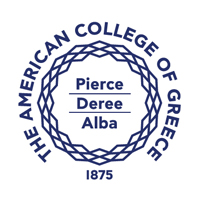Overview
The Environmental Science research lab hosts facilities that support different types of research, as outline below:
The atmospheric science research team engages in experimental activities that focus on monitoring and studying the ozone layer, as well as validating satellite instruments that measure total ozone levels. Another key research area is air pollution and its impact on cultural heritage. Additionally, the team investigates paleoclimate, climate dynamics, and climate evolution.
The biodiversity and evolution research team engages in research on Mediterranean ecosystems and biodiversity, with focus areas: forest ecosystem services and forest fires, the study of the evolution and paleobiology of aquatic vertebrates and the study of populations of threatened species in the Mediterranean.
The water quality research team engages in testing of water quality through analysis of water samples from various origins, using a variety of analytical techniques, including titrations, spectrophotometry and high-performance liquid chromatography.
The geospatial sciences research team will focus on three key areas: Natural Hazards and Disasters, Earth Surface Processes and Landforms, and Humanitarian Operations. The lab will utilize advanced geospatial technologies, including remote sensing, GIS, and spatial modeling, to assess and predict natural hazards such as earthquakes, floods, and wildfires. Investigations into earth surface processes will analyze landscape evolution, erosion patterns, and landform dynamics to better understand environmental changes. Additionally, research on humanitarian operations will leverage geospatial data to optimize disaster response, resource allocation, and crisis management, ultimately improving resilience and decision-making in vulnerable regions.
The urban studies research team engages in research for sustainable, inclusive/equitable and beautiful cities from an environmental justice perspective. It researches all aspects of urban life (like public spaces, mobility issues, resilience and more), integrating spatial design and social aspects. It aims to adopt multidisciplinary approaches (i.e., natural and social sciences, GIS, and fine arts), involving mixed qualitative research methods but also quantitative analysis as appropriate.
Mission
To perform and demonstrate frontier and state-of-the art research in environmental sciences on topics of current relevance, and more specifically in the fields of atmospheric science, water quality analysis, biodiversity and evolution, geospatial analysis and urban environmental issues; to engage students in this research and help them develop research skills.
Vision
To become a top center for research & innovation in environmental sciences in Greece and Southeast Europe.
